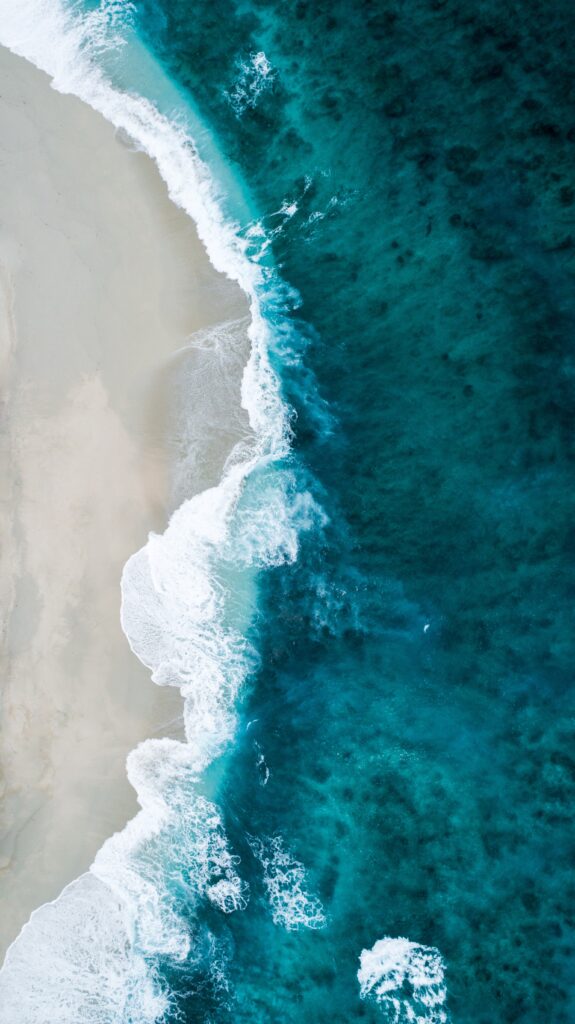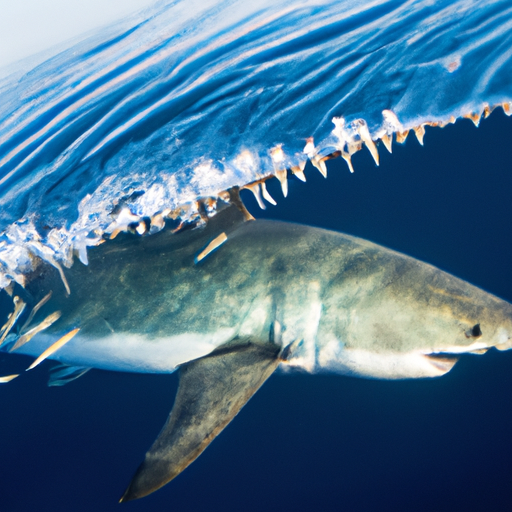Have you ever wondered why swimming with great white sharks is strongly discouraged? This article aims to shed light on the reasons behind this cautionary advice. While the idea of getting up close and personal with these majestic creatures may be thrilling, the inherent risks involved make it an incredibly dangerous endeavor. By understanding the behavior and nature of great white sharks, you’ll soon discover why it’s best to admire them from a safe distance.
1. Overview
Great white sharks are one of the most fascinating and feared creatures in the ocean. Known for their immense size, sharp teeth, and powerful presence, these magnificent predators have captured the imagination of people around the world. However, swimming with great white sharks is a highly dangerous activity that should never be attempted without proper training and precautions. In this article, we will explore the physical characteristics of great white sharks, their natural habitat and behavior, the risks associated with swimming with them, the legal and ethical implications, responsible ways to observe them, myths and misconceptions surrounding the species, and advice from experts. By understanding the nature of these incredible animals, we can ensure our safety and preserve their conservation.
2. Physical Characteristics of Great White Sharks
2.1 Size
Great white sharks are known for their impressive size, with fully grown adults reaching an average length of 15 to 20 feet (4.6 to 6.1 meters). Some individuals have even been recorded to exceed 20 feet (6.1 meters) in length. These enormous creatures can weigh anywhere between 2,000 to 5,000 pounds (900 to 2,268 kilograms). Their sheer size makes them formidable predators in the ocean, capable of overpowering their prey with ease.
2.2 Teeth and Jaws
One of the most distinctive features of great white sharks is their mouthful of sharp, serrated teeth. These teeth are perfectly designed for tearing and ripping apart prey. Great white sharks have rows of teeth, with up to 300 teeth in their mouth at any given time. As their teeth can become worn or broken during feeding, new teeth constantly move forward to replace the ones that are lost. The jaws of a great white shark can exert immense force, allowing them to deliver a powerful bite.
2.3 Speed and Agility
Great white sharks are known for their incredible speed and agility in the water. They can reach speeds of up to 20 miles per hour (32 kilometers per hour) when swimming, allowing them to swiftly chase down their prey. Additionally, their streamlined bodies and powerful tails enable them to make sudden turns and maneuvers with ease, making them highly effective hunters in the ocean.
2.4 Sense of Smell
The sense of smell of great white sharks is nothing short of extraordinary. They possess an acute sense of smell that enables them to detect even trace amounts of blood or other scents in the water. It is believed that they can sense a drop of blood in a vast ocean from a considerable distance. This keen sense of smell helps them locate potential prey, even when it is hidden or far away.

3. Natural Habitat and Behavior
3.1 Ocean Habitat
Great white sharks are found in various oceans around the world, preferring temperate and coastal areas. They are known to inhabit regions such as the coast of California, Australia, South Africa, and Mexico. These sharks prefer deeper waters but are also frequently found near shorelines, where their prey is abundant. They are versatile creatures that can tolerate a range of water temperatures, allowing them to adapt to changing environments.
3.2 Migratory Patterns
Great white sharks are known to exhibit migratory behavior, traveling long distances in search of food and suitable habitats. They often follow prey migrations, such as seals or sea lions, and move between different feeding grounds throughout the year. It is essential to understand their migratory patterns to predict their presence in specific areas and reduce the risk of encounters with humans.
3.3 Feeding Behavior
As apex predators, great white sharks have a voracious appetite and feed on a variety of marine species. Their diet primarily consists of seals, sea lions, and other large marine mammals, but they are also known to consume fish, squid, and smaller sharks. When hunting, great white sharks employ an ambush technique, launching themselves from below to surprise their prey. They use their razor-sharp teeth and powerful jaws to deliver a devastating bite, often causing severe injuries that can be fatal.
3.4 Social Behavior
While great white sharks are often solitary creatures, researchers have observed social behavior in certain situations. During feeding events or around concentrated food sources, multiple individuals may gather and tolerate each other’s presence temporarily. However, these social interactions are brief and do not indicate the formation of long-term social structures or relationships.
4. Great White Shark Attacks on Humans
4.1 Case Studies
While great white shark attacks on humans are relatively rare, they can be severe and potentially fatal. Numerous case studies have documented instances where swimmers, surfers, or divers have been attacked by great white sharks. These attacks often occur when the sharks mistake humans for their natural prey, such as seals or sea lions, due to similar silhouettes and movements in the water. Case studies provide valuable insights into the circumstances surrounding these attacks and help researchers understand the factors that may trigger them.
4.2 Factors that May Trigger Attacks
Several factors can increase the likelihood of a great white shark attack. Firstly, engaging in activities that resemble the behavior of their natural prey, such as swimming or surfing near seal colonies, can attract their attention. Secondly, being in murky or turbid water where visibility is limited can increase the likelihood of mistaken identity. Additionally, swimming during periods of high fish activity or near fishing vessels that discard bait can attract sharks to the area. Understanding these triggering factors is crucial for minimizing the potential for encounters and preventing attacks.

5. Dangers of Swimming with Great White Sharks
5.1 Predatory Nature
Great white sharks are apex predators and possess all the physical attributes necessary for efficient hunting. Their large size, sharp teeth, impressive speed, and acute sense of smell make them formidable hunters in the ocean. Swimming with great white sharks puts humans in close proximity to a creature capable of inflicting devastating injuries with a single bite. Their predatory nature demands respect and caution to ensure our safety.
5.2 Misidentification Risks
One of the significant risks associated with swimming with great white sharks is the potential for misidentification. These apex predators rely on visual cues and movement to locate their prey. In some instances, a great white shark may mistake a human in the water for its natural prey, resulting in a bite or attack. Even a brief encounter can have severe consequences, and it is crucial to minimize the risk of mistaken identity by avoiding behaviors or areas that may attract their attention.
5.3 Inadequate Protection
Despite advances in technology and equipment, swimming with great white sharks poses significant safety risks. Shark cages, for example, are commonly used for protection during close encounters with sharks. However, these cages are not foolproof and may provide a false sense of security. Great white sharks have been known to breach cages or exhibit aggressive behavior towards them, potentially putting individuals at risk. Swimming without adequate protection is highly discouraged due to the inherent dangers involved.
6. Legal and Ethical Implications
6.1 Laws and Regulations
Swimming with great white sharks is subject to various laws and regulations, varying from country to country and region to region. Many jurisdictions prohibit direct contact with great white sharks, recognizing the dangers associated with these activities. Additionally, specific marine protected areas or sanctuaries may impose additional restrictions to ensure the conservation and protection of great white sharks and their habitats. It is essential to familiarize oneself with the laws and regulations of the respective area before pursuing any activities involving these remarkable creatures.
6.2 Conservation Efforts
Great white sharks are a protected species in many parts of the world due to their ecological significance and conservation status. Conservation efforts focus on understanding their behavior, migratory patterns, and population dynamics to develop effective management strategies. Through research, public awareness campaigns, and habitat protection initiatives, conservation organizations and governments strive to ensure the long-term survival of great white sharks and maintain the delicate balance of marine ecosystems.

7. Responsible Ways to Observe Great White Sharks
7.1 Shark Cage Diving
Shark cage diving is a popular activity that allows individuals to observe great white sharks up close while ensuring a level of safety. This activity involves submerging a sturdy cage in the water, providing a protected vantage point to view and photograph these incredible creatures. Shark cage diving should only be undertaken with reputable and experienced operators who follow strict safety protocols and ethical guidelines. It is crucial to prioritize the well-being of the sharks and minimize any impact on their natural behavior.
7.2 Watching from a Safe Distance
Observing great white sharks from a safe distance, such as from a boat or a vantage point on land, is another responsible and non-intrusive way to experience their majesty. This allows individuals to appreciate these magnificent creatures without directly interfering with their natural habitat. With the aid of binoculars or cameras with telephoto lenses, one can still capture remarkable photographs and gain a greater understanding of the behavior and ecology of great white sharks without putting themselves or the sharks at risk.
8. Myths and Misconceptions
8.1 Great Whites as Mindless Killers
One of the most common myths surrounding great white sharks is their portrayal as mindless killers. In reality, these sharks do not seek out humans as prey. Attacks on humans are typically cases of mistaken identity, where the shark misinterprets a human’s silhouette or movements as that of their natural prey. Great white sharks are intelligent creatures, finely adapted to their environment, and possess no inherent malice towards humans.
8.2 Intelligent and Strategic Hunters
Contrary to popular belief, great white sharks are not mere killing machines. They are highly intelligent creatures that exhibit remarkable hunting strategies. Great white sharks use their keen senses to detect and stalk prey, often employing stealth and patience before launching an attack. Their ability to adjust their hunting techniques according to the situation showcases their intelligence and adaptability as apex predators in the marine ecosystem.

9. Expert Opinions and Advice
9.1 Insights from Marine Biologists
Marine biologists emphasize the importance of minimizing interactions between humans and great white sharks for the safety of both species. Their research provides valuable insights into the behavior and ecology of these creatures, helping us understand their needs and motivations. By studying their migratory patterns, feeding behaviors, and habitats, marine biologists can provide valuable insights that inform conservation efforts and ensure the coexistence of great white sharks and humans.
9.2 Recommendations for Safety
Experts recommend following safety guidelines and regulations when encountering great white sharks. It is crucial to remain aware of your surroundings, avoid behaviors that resemble natural prey movements, and adhere to local laws and regulations. Traveling with experienced guides who prioritize safety and conservation can provide a deeper understanding and ensure responsible interactions. Importantly, respecting the wild nature of these creatures by observing them from a safe distance helps ensure the safety of both humans and great white sharks.
10. Conclusion
Swimming with great white sharks is an activity that should be approached with extreme caution. These incredible creatures command respect and admiration for their physical capabilities and environmental significance. Understanding their physical characteristics, behaviors, and the potential risks associated with swimming with them is vital for maintaining our safety and preserving their conservation. By following responsible observation practices, respecting legal and ethical guidelines, and learning from expert opinions, we can enjoy the awe-inspiring presence of great white sharks while safeguarding our lives and the future of these magnificent apex predators.

- Can You Dive With Sharks In California? - August 19, 2023
- What Are The Rules Of Shark Cage Diving? - August 19, 2023
- Where In Florida Can You Dive With Sharks? - August 19, 2023








